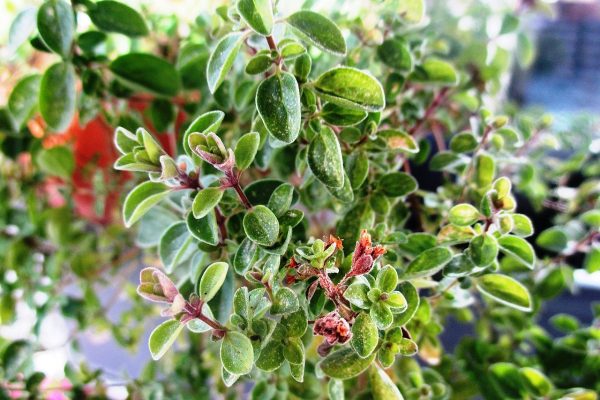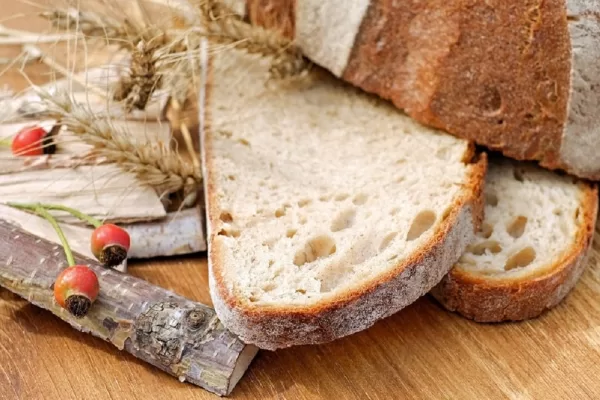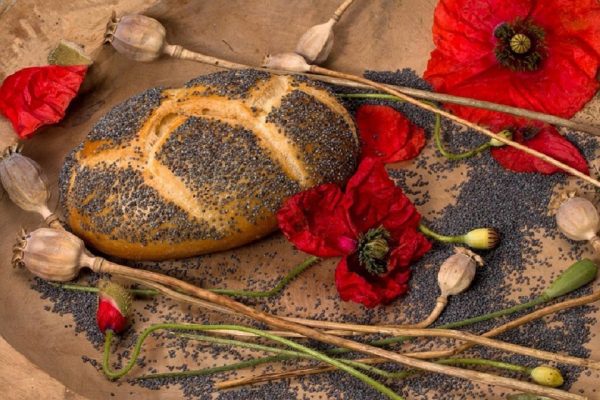Czechs love nothing more than lard (pork fat or sádlo) and cracklings on bread accompanied with some mustard, a bit of onion, a pickle, and a nice Czech beer. Eating this delicious combination has been known to evoke moments of genuine human joy. Seriously. Sit in any Czech pub on a cold winter night and see the stuff being passed around like there’s no tomorrow.
Now before you knock lard-covered bread as the most unhealthiest thing you can imagine eating, do your homework. The Czech rendered pig blubber is not your typical saturated animal fat. With an unusual chemical composition, pure lard actually contains no (zero, none, zip) trans fats. And in terms of its fatty acids, it’s better for you than butter. We believe it’s the healthiest fat!
That’s we we indulged heavily the last time we went to visit. The healthiest fat? Count me in. :)
Pork lard is 60 per cent monounsaturated fat, which is associated with a decreased risk of heart disease. Lard acts as an invaluable aid in the ‘decoupling’ effect of fatty acids, thereby actually reducing your cholesterol.
Czech grandmothers knew exactly what they were doing when they schmeared it on our bread – and top it with some chipped or sliced raw onion and you’ve got yourself a health food!
Babi knows best!
Seriously folks, the majority of lard’s monounsaturated fat is oleic acid, which is the heart-healthy essential fatty acid found in olive oil and associated with decreasing LDLs, thus lowering “bad” cholesterol.
Today, most people will agree that olive oil and coconut oil are very hip, In fact, as stalkers of many amazing foodie blogs, it’s hard to call yourself a foodie without having a big bottle of each in your pantry. However, be advised that olive oil is mostly monounsaturated fat and coconut oil is mostly saturated fat. Opposite ends of the spectrum – yet both are known as health food. Strange when they are opposites in terms of fat composition.
Are we confusing you? Okay, let’s try to make it easier to understand…
Let’s compare America’s favorite plant-based health food oils to lard. Interestingly, pork lard is a perfect balance between those two extremes (olive and coconut oils). In fact, if you mix 1 part olive oil with 1 part coconut oil, the resulting mixture of fats will match lard’s fat composition numbers almost exactly.
The beautiful theory of meeting in the middle.
But you still cannot imagine yourself eating a slice of hearty bread covered with fat?
Well, before you cringe, know this…
In order to consume as much cholesterol as what is typically found in one large hard boiled egg, (note: that is ONE egg) you would have to eat about an entire cup of lard. An entire cup!
And have you ever tasted bread smeared with lard?
It’s something we recommend you do when you visit the Czech Republic.
When you bake a cake, use lard instead of vegetable fat, it healthier.
When you bake a chicken, use lard and it will be crispier and more beautiful.
When you fry anything, use lard and it will be smoke-free and stable. Fried lard also produces no carcinogens, so it’s better than vegetable oils.
When you want to use butter, or worse yet, margarine – use lard instead. Scientists have concluded that those who replaced margarine and butter with lard will live longer than those who indulge in butter and margarine.
So why use a “substitute” when even our grandmothers knew well what is healthy?
Remember, Babi knows best!
Lard is so versatile, it can even be used as medicine. Saturated fats are very important for healthy bones and strengthen the immunity, and it’s also full of Vitamin E. And in the beauty department, remember that lard contains no chemicals, no perfumes or other additives. There’s no irritation to sensitive skin and it’s ideal for dry skin or those with eczema.
If you’ve heard that Mediterranean women are beautiful because they use olive oil on their skin – now you know the Czech beauty secret…
Lard.
Wonderful, creamy, tasty, smooth, fat…
To give you an idea of how Czechs enjoy their lard covered bread, we trawled Instagram for the best #sadlo and #skvarky images we could find.
Dobrou Chut!
(If you are not familiar with how Instagram works – the comments and writing you see attached to each photo belongs to the photo owner and is not ours…)
View this post on Instagram
View this post on Instagram
View this post on Instagram
View this post on Instagram
View this post on Instagram
View this post on Instagram
View this post on Instagram
View this post on Instagram
View this post on Instagram
View this post on Instagram
The darker-colored covering is actually rendered lard with pieces of pork cracklings still inside.
These are called škvarky.
View this post on Instagram
When you pour the rendered fat into your jars, it will be yellow. My grandmother would strain it through a sieve and then a cheesecloth lined sieve. Some people separate it, others keep it together. It’s really a matter of personal preference.
When it chills, it becomes white.
View this post on Instagram
The best lard is homemade, but they sell it all over the Czech Republic as well.
View this post on Instagram
View this post on Instagram
View this post on Instagram
Some people like lots of crackings and the butchers in the Czech Republic know this, so you can even buy cracklings alone, as a snack… for on the go!
You hear that musical sizzle? Music to our ears!
View this post on Instagram
So as you can see, in Czech cuisine, a very popular and traditional combination is the consumption of lard spread on bread with onions. This simple yet flavorful dish has been enjoyed by Czechs for generations. Lard (sádlo” in Czech) is a type of rendered pork fat that adds a rich and savory taste to the bread. It provides a creamy texture and a distinct flavor that complements the sweetness of the onions.
The process of enjoying lard on bread with onions is quite straightforward. The bread, typically a crusty and dense variety, is sliced and spread generously with lard. The lard adds a smooth and indulgent layer to the bread’s surface. Thinly sliced onions are then placed on top, providing a fresh and aromatic crunch. The combination of the creamy lard, the slight saltiness, and the pungent sweetness of the onions creates a delightful harmony of flavors.
This traditional Czech dish is often enjoyed as a snack or appetizer, especially during gatherings or celebrations. It is a humble yet satisfying choice that highlights the culinary heritage of the Czech Republic. Many Czechs take pride in this simple yet delicious combination, appreciating the balance of flavors and the connection to their cultural roots.
While the consumption of lard on bread with onions might not be as prevalent in modern times due to changing dietary preferences, it still holds a special place in Czech culinary traditions. It serves as a reminder of simpler times and the resourcefulness of Czech cuisine. For those seeking an authentic taste of Czech culture, indulging in lard on bread with onions can be a delightful and nostalgic experience.
Click Here to Get Your Free Czech Desserts Cookbook
* * * * *
Thank you in advance for your support…
You could spend hours, days, weeks, and months finding some of this information. On this website, we curate the best of what we find for you and place it easily and conveniently into one place. Please take a moment today to recognize our efforts and make a donation towards the operational costs of this site – your support keeps the site alive and keeps us searching for the best of our heritage to bring to you.
Remember, we rely solely on your donations to keep the project going.
We appreciate you more than you know!
If you have not already subscribed to get TresBohemes.com delivered to your inbox, please use the form below now so you never miss another post.






















This is great. I grew up on a farm where butchering was a regular thing. My favorite sádlo was that rendered from a nice fat goose which mother raised. The fine lard combined with the juices from the seasoned meat, and perhaps some caraway used in the seasoning, was an unequaled treat.
Oh yum! I know exactly the kind you are speaking of Millie. Absolutely delicious!